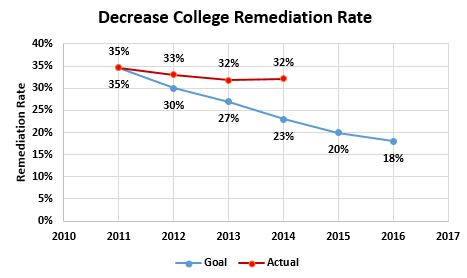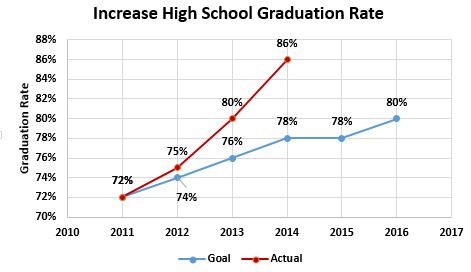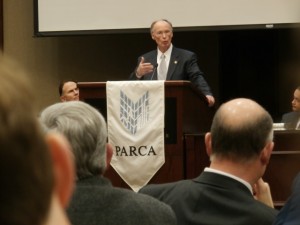Alabama public high schools produced more graduates in 2014 than they produced the previous year, and more of them enrolled in Alabama public two-year and four-year colleges and universities, according to the latest High School Feedback report from the Alabama Commission on Higher Education (ACHE).
However, a slightly higher percentage of those entering freshman, 32.1 percent, had to take remedial courses in English or math to prepare them for college-level work, according to the ACHE report. (To explore results for schools and systems scroll to the bottom of the page). Plan 2020, the state’s strategic plan for educational improvement, calls for increasing the high school graduation rate and decreasing the need for those graduates to enroll in remedial courses.


Each year, ACHE works with the Alabama Department of Education and the state’s colleges and universities to account for how many graduates from Alabama high schools enrolled in Alabama public colleges and universities.
The report also gathers data on how many of the entering freshmen required remedial courses in college. These are courses designed to bring entering freshman up to the level of competency required to perform at the college level.
Ideally, all students graduating from high school and enrolling in college would be prepared by their high school to be college-ready.
Students who need remediation are taking courses that don’t count toward college completion. Remedial courses are a cost to the students, who are paying for non-credit courses, and a cost to colleges and universities that provide the courses.
The State Department of Education has set goals for increasing the percentage of students that graduate from high school and goals for increasing the percentage of those students who are college ready, work and who are not in need of remediation.
The latest report from ACHE tracked students who graduated from high school and enrolled in college in 2014.
Before getting too deep in the details of the data, it is important to note some limitations.
First, the only students who show up in the survey are those who graduated from Alabama public high schools and who then enrolled in Alabama public colleges and universities, both two-year and four-year institutions. Students who attended private schools for high school or who entered private colleges and universities are not counted. Neither are students who chose to enroll in out-of-state colleges and universities. So, the statistics explored don’t capture a true college-going rate for the state or for individual schools.
And the remediation rate calculated for any high school only applies to the graduates of that high school who enrolled in an Alabama public higher education institution.
As a final caveat, there is not a common definition across Alabama public higher education institutions for who qualifies for remediation. At some schools, the bar may be higher; at some, it might be lower.
So to the data:
Alabama public high schools produced 1,007 more graduates in 2014 than they did in 2013 and sent an additional 500 graduates to Alabama colleges and universities (22,872 in 2013 vs. 23,379 in 2014).
In 2014, 51 percent of graduates went on to a public two-year or four-year college in Alabama, the same percentage as the year before.
Of those recent high school graduates going to college, 11 percent needed both remedial math and remedial English; 15 percent needed only remedial math, and 6 percent needed only remedial English. In total, 32.1 percent took either remedial math, remedial English or both. That is a slightly higher percentage than in 2013 when 31.8 percent enrolled in remedial courses.
The dashboard below allows you to explore detailed results for schools. There are two tabs, one focusing on remedial data, the other on in-state public college going rates. Bear in mind that the percentage of high school graduates needing remedial math and the percentage of graduates needing remedial English won’t add up to the total percentage of graduates in need of remediation. Some of those graduates needed remediation in both subjects. The total percentage figure avoids double-counting the students in need of remediation in both subjects.








